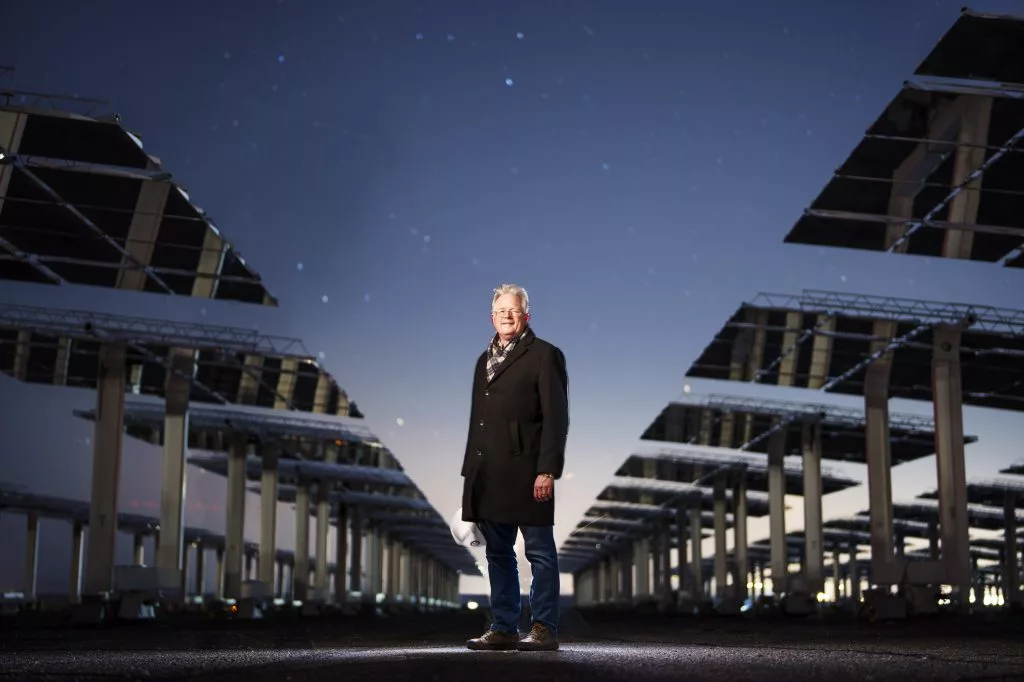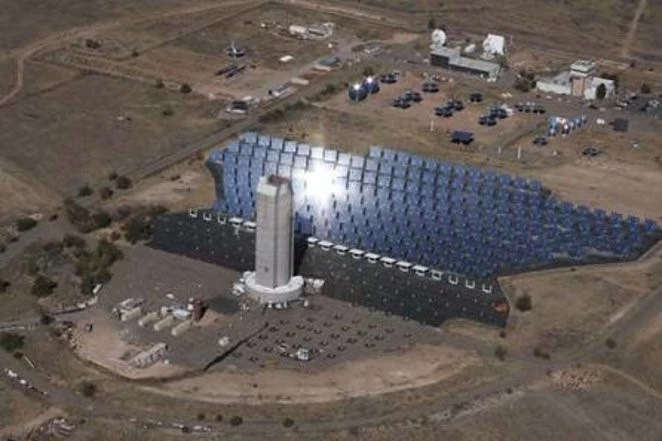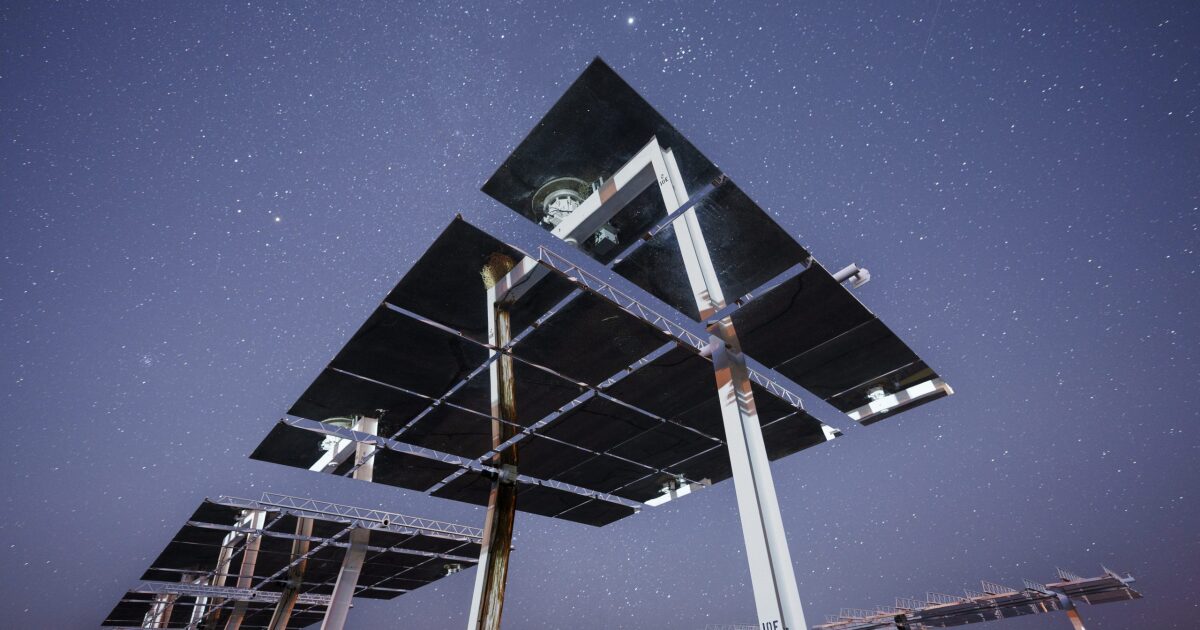To keep solar power stations from getting lazy, Sandia National Laboratories scientist John Sandusky is looking to give heliostat mirrors a side hustle. At the National Solar Thermal Test Facility he’s experimenting with getting them to hunt for asteroids at night.
Whatever their benefits, all solar power systems have one flaw in common – they don’t work at night. Once the sun sets, that’s it for the day. The system shuts down and generates zero power until sunrise the next day.
That’s just a fact of life and engineering, but what if there was a way to get some useful work out of a solar plant when the stars are out? That was the question Sandusky wanted to answer when he began his tests at the National Solar Thermal Test Facility at Sandia National Laboratories in Albuquerque, New Mexico.
The only research plant of its kind in the United States, it consists of a 200-foot-high (61-m) concrete tower flanked by 218 mirrors mounted on heliostats that automatically track the sun and concentrate its rays on the tower target. With its 398 sq ft (37 sq m) of reflective surfaces, the facility can generate 6 MWt of power.

Sandia Labs
Mind you, when the sun goes down that power output drops to a tidy zero.
However, those heliostats can do more than track the sun. They can also be programmed to track other objects and that means that Sandusky could make them do something clever.
As part of a Laboratory Directed Research and Development project, Sandusky took one of the heliostats and had it track the night sky like a telescope and projected the reflected energy onto optical instruments on the tower. This energy amounted to only a femtowatt of power, but by oscillating the heliostat back and forth over a one-minute cycle, he created conditions suitable for asteroid detection.
Traditionally, asteroids are spotted using full-fledged optical telescopes that capture time-lapse images of the sky over minutes or hours, with the telescope synchronized to track the stars. In these long exposures, stars appear as points of light. But if an asteroid is present, it appears as a streak, allowing astronomers to determine its existence, distance, size, and orbit.

Sandia Labs
The problem is that there’s a lot of sky and a finite number of telescopes, which is why so many asteroids are discovered by dedicated amateurs. Since we now know that asteroids can be both a source of valuable minerals and a potential danger to the Earth, astronomers are eager for more tools to improve their detection capabilities.
Sandusky’s technique doesn’t produce images with visible streaks. Instead, it captures the photocurrent power spectrum of incoming light at sub-milliHertz resolution. If an asteroid – or a spacecraft – passes through the field of view, it shows up as a frequency shift relative to the background starlight, indicating a change in angle of motion.
It’s not as dramatic as a photograph plate with a telltale streak on it, but it’s good enough to show the potential for using idle solar power facilities as low-cost supplements to NASA’s Asteroid Terrestrial-impact Last Alert System (ATLAS), which is designed to seek out potentially dangerous asteroids. According to Sandusky, it could also have military applications by allowing defense agencies to detect spacecraft operating secretly in cislunar space. However, that that would require developing the technique to a practical level.
‘”We’re looking for opportunities to scale up from one heliostat to many and try to demonstrate that we can help find near-Earth objects,” said Sandusky. “We also want to demonstrate we can scale up the technology to detect even smaller asteroids.”
The research was presented at a conference of the International Society for Optics and Photonics.
Source: Sandia Labs

